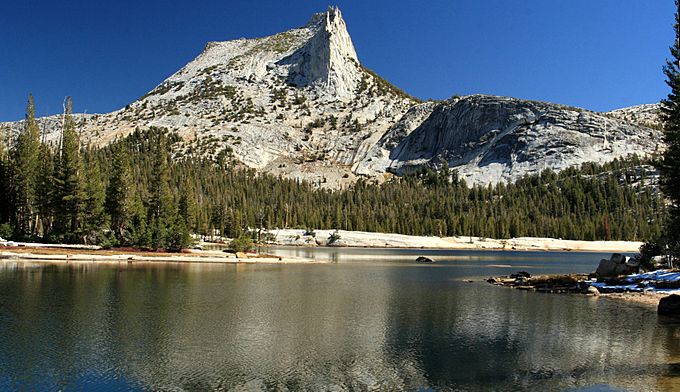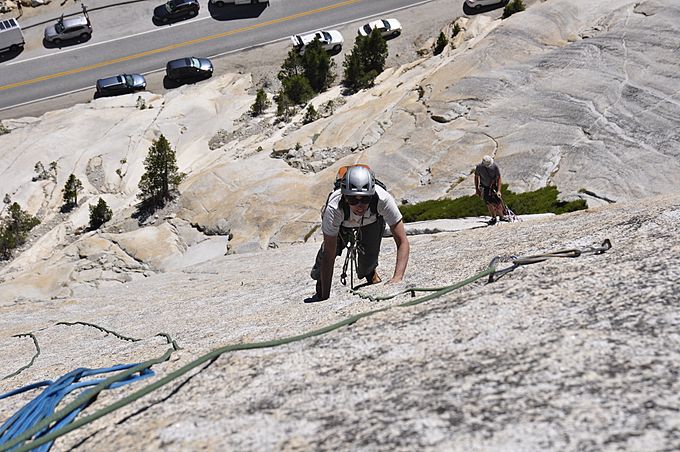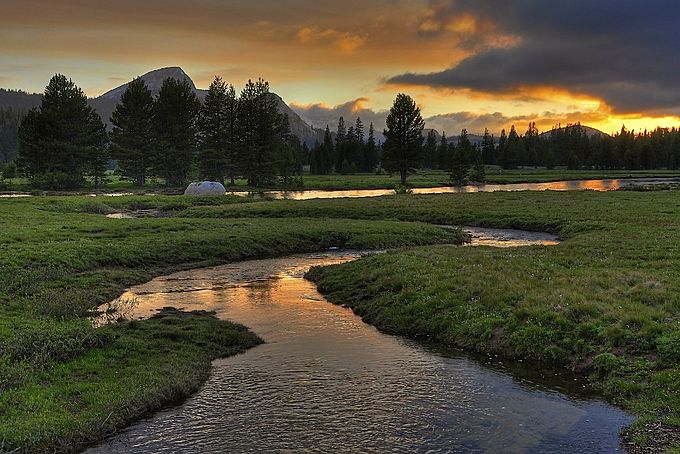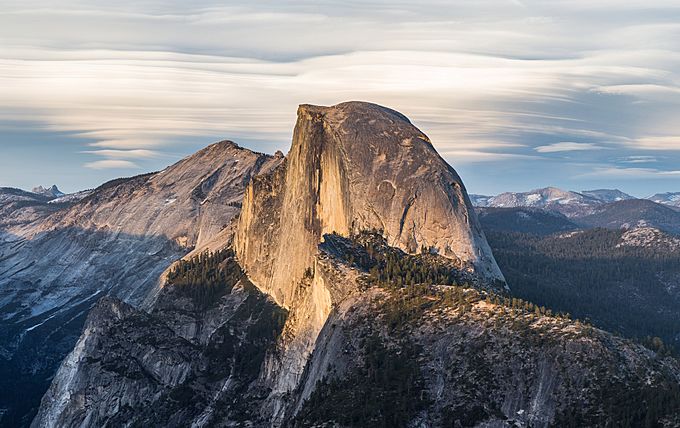Hiking, rock climbing, and mountain climbing around Tuolumne Meadows facts for kids
Tuolumne Meadows in Yosemite National Park is an amazing place for outdoor adventures! You can enjoy lots of activities here, like hiking, rock climbing, and even mountain climbing. It's a perfect spot to explore nature and challenge yourself.
Hiking Adventures in Tuolumne Meadows
Tuolumne Meadows is a fantastic starting point for many hiking and backpacking trips. Some very long trails, like the John Muir Trail and the Pacific Crest Trail, pass right through Lyell Canyon and into Tuolumne Meadows.
There are also many shorter day trails that are perfect for a quick adventure. These day hikes are very popular, especially during the summer. A shuttle bus helps people get to these trails, usually from June to September, depending on the weather.
Here are some cool places you can hike to:
- Bennettville, a ghost town
- Budd Lake (California)
- Cathedral Lakes
- Conness Glacier
- Dana Meadows
- Dog Lake
- Donohue Pass
- Elizabeth Lake
- Gaylor Lakes
- Glen Aulin
- Hall Natural Area
- John Muir Trail
- Lyell Canyon, by way of the John Muir Trail
- Lyell Meadow
- Mono Pass
- Parsons Lodge
- Soda Springs
- Soda Springs Cabin
- Tioga Pass
- Vogelsang High Sierra Camp, one of many special camps in the Sierra Nevada mountains
- Waterwheel Falls
- Young Lakes

Rock Climbing on Granite Domes

Rock climbing is very popular in Tuolumne Meadows. This area has many smooth, rounded rock formations called granite domes. Unlike the huge, tall cliffs in Yosemite Valley, climbing here usually involves shorter routes on these domes.
Since Tuolumne Meadows is high up in the mountains, the climbing season is mostly from June to September. The granite rock here is very strong and often has small bumps, which makes for interesting climbs. The rock can also peel off in layers, creating those unique "onion dome" shapes.
Climbers here often find both face climbs (where you climb the flat surface) and crack climbs (where you climb in cracks in the rock). It's a local rule to add very few new bolts (safety anchors) to routes. This means there can be long distances between bolts, making climbs more challenging.
Some of the major granite domes for climbing include:
- Daff Dome
- Dog Dome
- Dozier Dome
- Fairview Dome
- Harlequin Dome
- Lembert Dome
- Mariolumne Dome
- Marmot Dome
- Medlicott Dome
- Polly Dome
- Pothole Dome
- Puppy Dome
- Stately Pleasure Dome
Some peaks are usually climbed using rock climbing techniques, even though some might be hiked:
Mountain Climbing in the High Sierra
Mountain climbing is also a favorite activity around Tuolumne Meadows. Many tall peaks in the Sierra Nevada mountains are found here. For a list of the very highest mountains in all of Yosemite National Park, you can check out the page on the highest mountains of Yosemite National Park.
Here are some mountains you can climb from Tuolumne Meadows:
- Amelia Earhart Peak
- Banner Peak
- Blacktop Peak
- Cathedral Peak, and Eichorn Pinnacle
- Donohue Peak
- Echo Ridge
- Electra Peak
- Excelsior Mountain
- False White Mountain
- Johnson Peak, which is the highest mountain in the Tuolumne area
- Kuna Crest
- Kuna Peak
- Mammoth Peak
- Matthes Crest
- Matterhorn Peak
- Mount Conness
- Mount Dana
- Mount Davis
- Mount Florence
- Mount Gibbs
- Mount Hoffmann
- Mount Lyell, the tallest peak in all of Yosemite National Park
- Mount Maclure
- North Peak
- Parsons Peak
- Rodgers Peak
- Sheperd Crest
- Simmons Peak
- Tioga Peak
- Tresidder Peak
- Tuolumne Peak
- Virginia Peak
- Vogelsang Peak
- White Mountain



